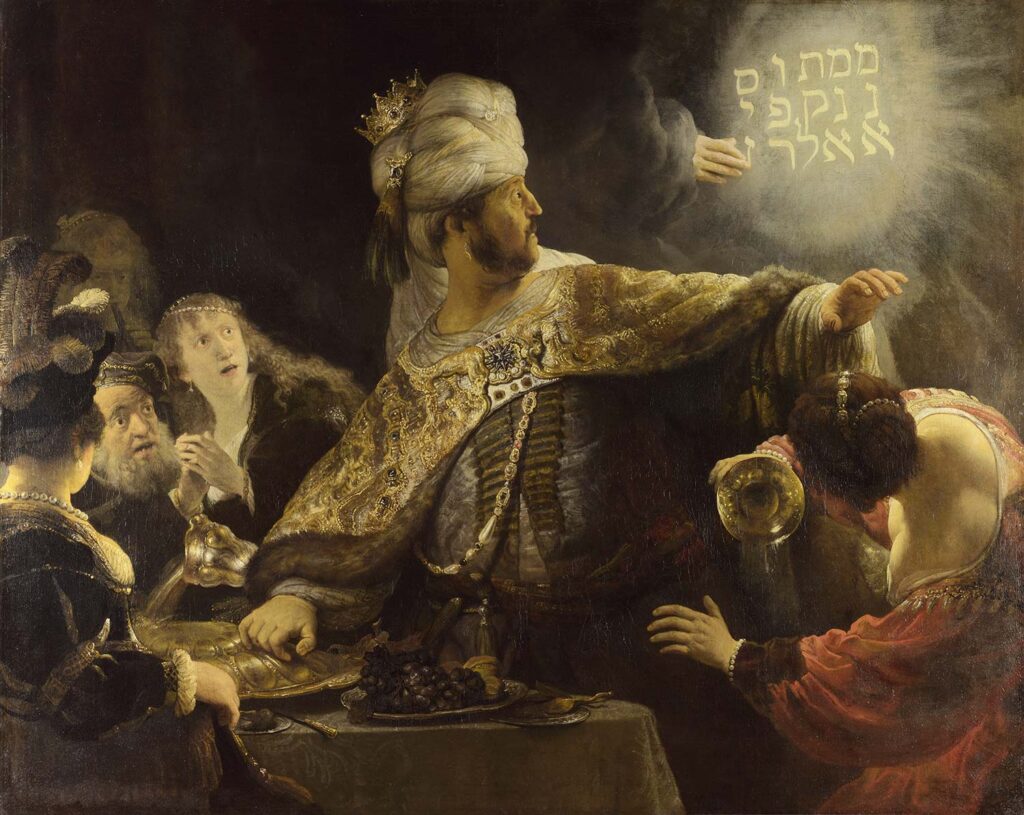Belshazzar’s Feast by Rembrandt van Rijn was created in 1636 – 1638. The painting is in National Gallery London. The size of the work is 167,6 x 209,2 cm and is made of oil on canvas.
In his great dramatic painting, Rembrandt tells a story from the Old Testament (Daniel 5: 1–5, 25–8). The man in the gold cloak, enormous turban and tiny crown is Belshazzar, King of Babylon. His father had robbed the Temple of Jerusalem of all its sacred vessels. Using these to serve food at a feast, as Belshazzar does here, was seen as sacrilege. In the middle of the party, a clap of thunder came as a warning. God’s hand appeared from a cloud and wrote in Hebrew script: ‘You have been weighed in the balance and found wanting.’ Within hours, Belshazzar was dead. Read more in National Gallery London.
About the Artist: Dutch Golden Age painter, printmaker and draughtsman Rembrandt was born on 15 July 1606 in Leiden, in the Dutch Republic, now the Netherlands. As a boy, he attended a Latin school. At the age of 13, he was enrolled at the University of Leiden, although according to a contemporary he had a greater inclination towards painting. In 1624 or 1625, Rembrandt opened a studio in Leiden, which he shared with friend and colleague Jan Lievens. In 1627, Rembrandt began to accept students, which included Gerrit Dou in 1628 and Isaac de Jouderville… Read more
Order a reproduction of this work (printed on canvas)

